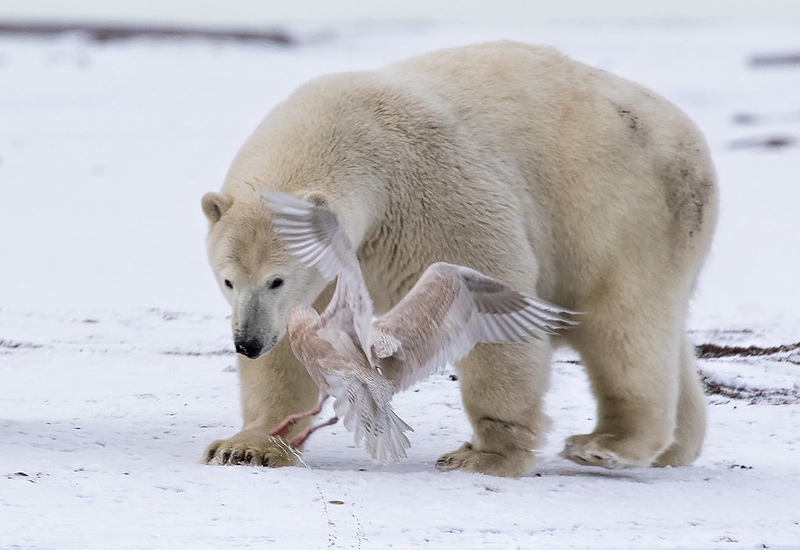

Coxiella – This is a bacteria found in polar bears and animals that causes Q-fever, a disease that can cause death among animals.In humans, Trichinella parasites cause Trichinellosis which can cause facial swelling, heart and breathing problems, and even death. Trichinella Parasites – The microscopic parasite Trichinella is very common in polar bears.Some viruses and diseases that have been known to occur in polar bears are: In some cases, the disease itself will not kill them but will impact their ability to survive. Gleason, Vol 29, 2006).Īs with all life, there are many diseases and viruses that cause mortality among polar bears. For example, researchers witnessed polar bear carcasses floating 54km offshore, they estimate that up to 27 polar bears drowned during a single storm 9 (source: Polar Biology, C. 5, 2012).Īlthough polar bears are strong swimmers, fatigue and rough seas can result in drowning. The longest recorded swim by a polar bear was a female who traveled 687km which took more than 9 days 8 (source: Canadian Journal of Zoology, A.M. These journeys can often require several thousand-kilometer stretches of water that must be navigated. Polar bears migrate from the seasonal sea ice to islands or the mainland during summer when the sea ice melts. Malnourishment only affects certain sub-populations of polar bear, those that have the largest reliance on the sea ice and limited access to food during the summer months. Wilder, Vol 41, Issue 3, 2017), although polar bear attacks on humans are still very rare in any case. This is why the majority of attacks on human settlements are malnourished adolescents in search of food 7 (source: Wildlife Society Bulletin, J.M.

They have just left their mothers but still haven’t perfected their hunting skills.

Malnourishment is most likely to impact polar bears at the adolescent (sub-adult) stage of their lifecycle. Malnourished polar bears may be nutritionally stressed which can impact both their reproductive success and survival 6 (source: Science of The Total Environment, K.A. This can cause them to become malnourished and starve towards the end of summer. However, due to global warming, the sea ice is melting earlier each year which gives polar bears less time to build up their fat stores. Polar bears must build up large fatty reserves during winter to prepare for the summer months when the sea ice melts and they can no longer catch their main prey. They will often wait by breathing holes for seals to appear or catch them in the water. Polar bears are carnivorous and rely largely on a diet of seals and other marine mammals which they catch from the sea ice 5 (source: Polar Biology, M.P. MalnourishmentĪ National Geographic video of a starving polar bear has bought the issue of polar bear malnourishment into the limelight. Climate change is not a specific cause of death but contributes to all of these and is having a long-term impact on polar bear populations. The main causes of death among polar bears are malnourishment, drowning, disease, and being killed by humans. Debby lived to be 41 years old and holds a place in the Guinness World Records 4 (source: CBS News). The oldest polar bear ever known was Debby, she was born in the Arctic islands of Russia but spent most of her life at a Canadian Zoo. Polar bears live for longer in captivity where their life expectancy is 20.7 years for males and 24.2 years for females 3 (source: Oregon Zoo). The oldest male polar bear recorded in the wild was 28 2 (source: Polar Bears, I. The oldest known polar bear to live in the wild reached the age of 32 which was a female. However, pup mortality is high, and very few polar bears make it past 15 years 1 (source: Ursus, Ø. The maximum lifespan of polar bears in the wild is 30 years.


 0 kommentar(er)
0 kommentar(er)
